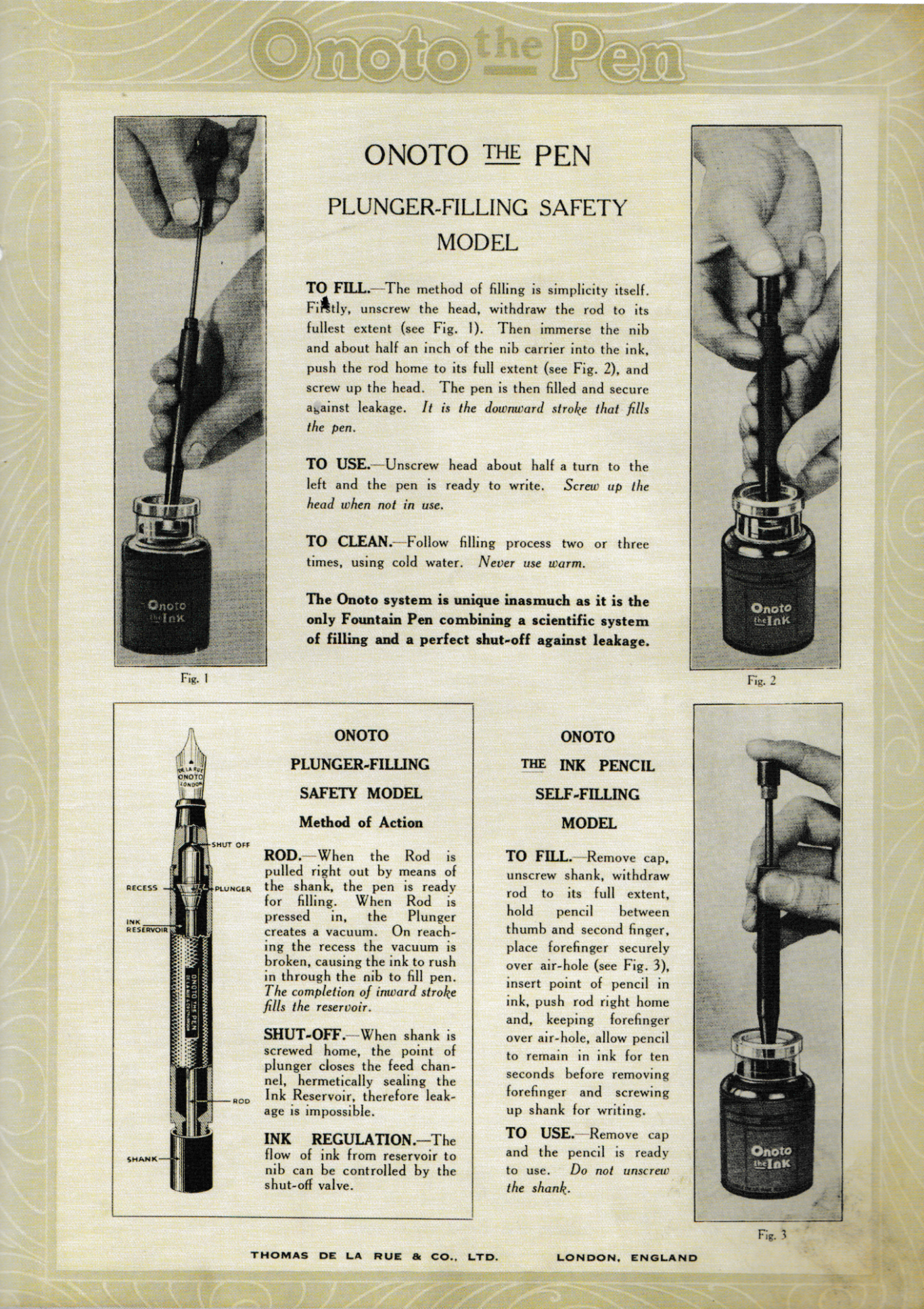Caring for your pen
A hundred year old pen requires slightly more care than a brand new one.
Hardened rubber
Many early pens were made from black hardened rubber. Later pens like many Onoto's used rubber for the filler knobs and cap tips.
Avoid prolonged exposure to water, heat and strong light as these may all encourage oxidisation (browning) of the rubber
Wipe your pen with white mineral oil every few months.

Heat
Always use cold or luke warm water to clean your pen. Heat can melt the shellac with which parts of your pen are held together.
Polishing
Metal parts can be polished with Simichrome or a similar metal polish and a soft cloth or cotton bud. For rubber, plastic and ebonite pens I would recommend Kiku-Mol polishing paste and a soft cloth.

Ink
Any fountain pen friendly ink can be used in your pen but bear these points in mind:
- Permanent inks are more likely to clog up your pen and cause flow issues and so should not be left in your pen for extended periods.
- The glitter in some shimmer inks can also cause flow issues and is difficult to flush out of older pens.
- All fountain pens should be flushed with cold water before filling with a new ink or if they are not going to be used for several weeks.
- I must recommend https://mountainofink.com. She has reviewed literally thousands of inks.

Budget recommendation
Diamine are an English company who have been producing a wide range of excellent, affordable inks since 1864

Expensive but worth it
As well as being wonderful colours, Pilot Iroshizuku inks flow really well and are recommended for any pen with flow issues.
Onoto filling instructions
Instructions for Onoto vacuum filling pens.

